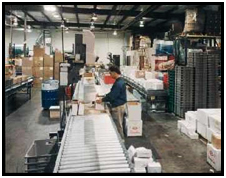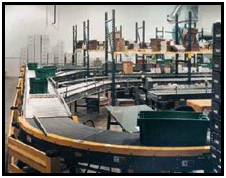|
With sales growing at double-digit levels and multiple items being added to its product line, this veterinary supply company needed an answer to a demanding order-processing challenge. And it needed one fast. Orders for the company's veterinarian equipment and supplies—which include vaccines and drugs requiring strict controls—were pouring in at a record clip. But the company's outmoded distribution facility was struggling to keep pace with the rising demand.
Manual Distribution
|
Order pickers had to go through the warehouse with shopping carts, moving from area to area, and shelf to shelf. Once the picking was complete, they then had to push the shopping carts back to a central packing table. Then after the packing was finished, the orders had to be moved by hand to the shipping area.
This discrete picking approach was far too slow and much too labor intensive for a company growing this fast. It involved an excessive amount of physical handling and movement around the facility-most of which was done manually. In fact, the only conveyorized equipment was a small roller conveyor line in the shipping area.
|
 |
Re-engineering The Warehouse
 For this family-owned company founded in the early 1960s, the answer to its product-flow problem lied in a simple-but-effective conveyorized system. Today, Hytrol conveyors swiftly and efficiently move orders through every stage of the order fulfillment process - from initial printing of the order to final preparation of the package for delivery to customers. The company's veterinarian customers are located in a ten-state region encompassing Ohio, Pennsylvania, New York, West Virginia, Indiana, Illinois, Wisconsin, Michigan, Tennessee, and Kentucky. For this family-owned company founded in the early 1960s, the answer to its product-flow problem lied in a simple-but-effective conveyorized system. Today, Hytrol conveyors swiftly and efficiently move orders through every stage of the order fulfillment process - from initial printing of the order to final preparation of the package for delivery to customers. The company's veterinarian customers are located in a ten-state region encompassing Ohio, Pennsylvania, New York, West Virginia, Indiana, Illinois, Wisconsin, Michigan, Tennessee, and Kentucky.
The advantages of the new conveyorized system have been striking. Order throughput is up approximately 20 percent compared to the old manual order-fulfillment method. Importantly, this productivity increase has been achieved without having to add personnel. The new system also allows warehouse management to more effectively control the workflow and to position people throughout the facility in response to order demand. Overall, shipments flow in a more organized and orderly fashion.
|









